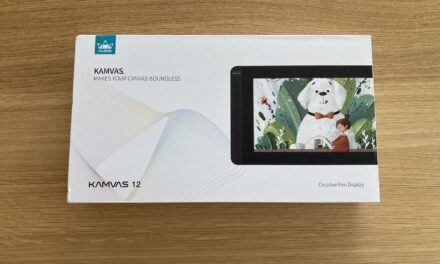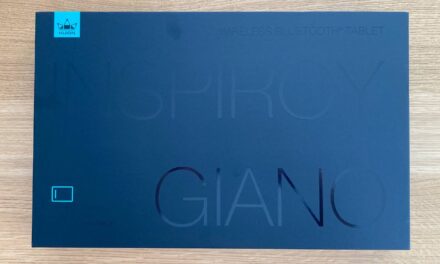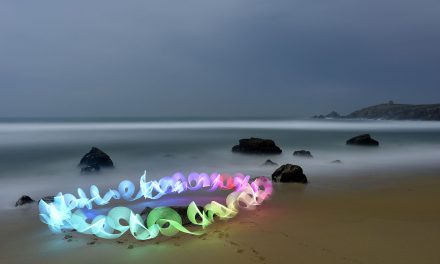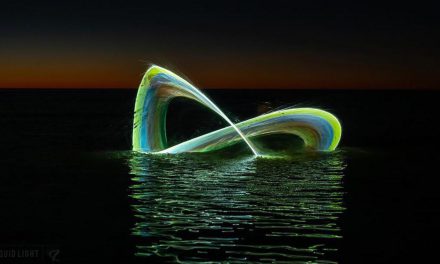
Light Art Digital Magazine - An interview with Sasa Lightpainting

Light Art Digital Magazine - An interview with Sasa Lightpainting
Please tell us a bit about yourself, name, where do you come from, profession, background, etc.
I am Sasa Lightpainting, I am a Spanish-Mexican light painter and I have lived in Spain for more than 14 years. I’m a teacher at a public institute, I dedicate to teaching. My interest in photography arose when I was a child and I started taking my first steps with an analogue camera. Later, already in Spain, I bought my first digital camera and it was when I came across Light Painting. Since then I decided to make Light Painting my passion and part of my life.
Ramsés a Mexican light painter, with studies in graphic design and photography. He has been professionally engaged in photography for several years, social photography and, lately, Light Painting workshops in Mexico. He is also the CEO of the tool shop for light painting called Laboratorio Light Painters Materials.
How and when did you come up with the idea of a Light Art magazine? How did it start?
The idea is an original idea of Ramses. One day, while talking on Facebook chat, Ramsés told me about the idea of creating a magazine specializing in Light Painting and I loved the idea. We were talking about the structure that would have and what we would do each of us. Originally the idea was to create a magazine called Light Painting Mexico, but after talking with several light painters, they suggested We do something more global. I discussed it with Ramses and decided to change the name and include the English version. All this within 15 days of launching the first issue. It was crazy! We had to search for translators desperately, I launched a call for help in a WhatsApp group in which we are about 20 Spanish light painters and immediately Iris Cebrian (Shyroii) replied offering selflessly to take over the English translation.
How long did it take you from planning to publish the first issue?
Hehehe, the first number was complete madness. Ramsés told me the idea at the end of November 2016. We were so enthusiastic about the idea that we decided to publish the first issue in January 2017. We had two months from the birth of the idea, name search, logo design, content definition, search for authors, translation and layout. Although the time was short, I must say that the idea was very well received by the authors of that first issue and that everyone made it as easy as possible. Especially Sam Mass, whom I met at the Congress Light Art City of Oviedo that summer and to whom I asked him to make the first cover. Sam agreed happily and made two photographs just for the magazine. We are very grateful to all the light painters who supported us in that first issue when the magazine did not exist. They gave us a vote of confidence and supported us with articles and photographs. Thank you so much guys!!!
Who is involved in this magazine, who is the crew and what are their roles? You live in different countries, how do you organize this?
The magazine has a very small team. There is Ramsés, who, being the creator of the idea, is the General Director, he is in charge of the layout of the magazine and the banners, mainly. There is Iris, who together with Víctor, take care of part of the translations into Spanish and English. We have another partner named Victor, who is in charge of giving us a hand with computer issues. Chanette Manso has recently joined the team and will have a section in which she will tell us about her experiences in the Light Painting events and events around the world. I am the editor and I take care of the rest: content proposal, contact artists, manage articles and photographs, translate articles, write editorials, etc. Regarding the definition of content, I define them, I make a proposal to Ramses and between the two of us we decide or he just gives me his Ok.
Ramsés lives in Mexico and the rest of the team in Spain (except Chanette Manso who lives in France) and the way to communicate is through information and communication technologies: chats, Facebook, WhatsApp, Skype, telephone … It’s funny, but Ramses and I do not know each other personally, we’ve only talked through technology and to be able to do this, is fantastic!
How easy is to get material and info from so many different people/artists? What are the challenges in general of such a publication?
The task of the editor is not an easy task since one of the most complicated parts is the management of content and achieve the delivery of them on time. The most complicated part of everything is the management of the artists. In general, there is no problem, it is only heavy on the workload. But there are times when it is complicated: emails that are not answered, answers that do not arrive, time that passes and passes, lack of seriousness or interest, egos with which to deal. This is the most complicated of all and, sometimes, it stops being fun.
What was the response of the light painting community? Do you have any numbers of how many people are downloading the magazine?
The response of the community to the appearance of the magazine has been very good. We have downloads (which reach 20,000) in the five continents of the world, mainly in Europe and America. However, despite the good comments we received when we published each of the numbers, we received little feedback in general, even from some artists who see their photograph or article published. We have to improve in this regard.

What are you aiming for in this magazine? What are your goals? Preparing and publishing a magazine is a lot of time and hard work. How is the magazine financially sustained?
Our main interest with this magazine is the one that has always guided us: to spread Light Painting as a form of artistic expression and to be a showcase for light painters around the world to exhibit their work. Light Painting is our passion and we make this magazine as a hobby in which we want to have fun.
We hold the magazine financially, we have made some incursions in advertising and we have put an official shirt on sale, but what we have obtained for it is minimal compared to the expenses we have, there are many, but they are something.
Who is choosing the material? Can people suggest some topics or works?
I (Sasa) is in charge of the content definition of the magazine and the relationship with the artists. Ramses is responsible for the layout of the magazine and the banners. What we have done so far is that I think of the contents, the themes, the artists that will participate and I commend them with Ramses. Sometimes it is necessary to change something, but most of the time we keep the original proposal.
People can contact us through our emails or our Facebook page to propose topics or photographs that they want us to publish, in fact, some of the articles and photos that we published have appeared after the authors put themselves Contact us and we have agreed to publish them.
What are your plans for the future with it?
The first thing we want is to consolidate what we have, manage all the requests we have and achieve a stable workflow, with rhythm and without delays in the publication dates. Sometimes work and family commitments prevent us from dedicating all the time desirable to the magazine and it takes us a while to respond.
Once we achieve this, we can think of the next step that is to achieve economic self-sufficiency of the magazine and be able to pay the artists who publish in it.
Spanish version below:
Cuéntanos un poco sobre ti, nombre, de dónde vienes, profesión, antecedentes, etc.
Yo soy Sasa Lightpainting, soy un lightpainter hispanomexicano y vivo en España desde hace más de 14 años. Soy profesor en un instituto público, me dedico a la enseñanza. Mi interés por la fotografía surgió cuando yo era un niño y empecé a dar mis primeros pasos con una cámara analógica. Más tarde, ya en España, compré mi primera cámara digital y fue cuando me encontré con en Light Painting. Desde entonces decidí hacer del Light Painting mi pasión y parte de mi vida.
Ramsés un lightpainter mexicano, con estudios en diseño gráfico y fotografía. Se dedica profesionalmente a la fotografía desde hace varios años, realizando fotografía social y, últimamente, talleres de Light Painting en México. También, es el CEO de la tienda de herramientas para Light Painting llamada Laboratorio Light Painters Materials.
¿Cómo y cuándo se te ocurrió la idea de una revista Light Art? ¿Cómo comenzó?
La idea es una idea original de Ramsés. Un día, estando hablando por el chat de Facebook, Ramsés me comentó la idea de crea una revista especializada en Light Painting y la idea me encantó. Estuvimos hablando de la estructura que tendría y de lo que haríamos cada uno de nosotros. Originalmente la idea era crear una revista llamada Light Painting México, pero después de hablar con varios lightpainters, me sugirieron hacer algo más global. Lo comenté con Ramsés y decidimos cambiar el nombre e incluir la versión inglesa. Todo esto a 15 días de lanzar el primer número. Fue una locura! Tuvimos que buscar traductores desesperadamente, lancé un llamado de ayuda en un grupo de whatsapp en el que estamos unos 20 lightpainters españoles y de inmediato Iris Cebrian (Shyroii) contestó ofreciéndose desinteresadamente a hacerse cargo de la traducción inglesa.
¿Cuánto tiempo le tomó planificar publicar el primer número?
Jejeje, el primer número fue una completa locura. Ramsés me comentó la idea a finales de noviembre del 2016. Estábamos tan entusiasmados con la idea que decidimos publicar el primer número en Enero 2017. Tuvimos dos meses desde el nacimiento de la idea, búsqueda de nombre, diseño del logo, definición de contenidos, búsqueda de autores, traducción y maquetación. Aunque el tiempo fue corto, he de decir que la idea fue muy bien recibida entre los autores de ese primer número y que todos lo hicieron lo más fácil posible. Especialmente Sam Mass, a quien conocí en el Congreso Light Art Ciudad de Oviedo ese verano y a quien le pedí que realizara la primera portada. Sam accedió encantado y realizó dos fotografías sólo para la revista. Estamos muy agradecidos con todos los lightpainters que nos apoyaron en ese primer número, cuando la revista no existía. Nos dieron un voto de confianza y nos apoyaron con artículos y fotografías. Muchas gracias chicos!!!
¿Quién está involucrado en esta revista, quién es el equipo y cuáles son sus roles? Vives en diferentes países, ¿cómo organizas esto?
La revista tiene un equipo muy pequeño. Está Ramsés, que al ser el creador de la idea es el Director General, él se encarga de la maquetación de la revista y de realizar los banners, principalmente. Está Iris, quien junto a Víctor, se encargan de una parte de las traducciones al español y al inglés. Tenemos otro compañero llamado Víctor, quien se encarga de echarnos una mano con las cuestiones informáticas. Chanette Manso se ha unido recientemente al equipo y tendrá una sección en la que nos contará sus vivencias en los encuentros y eventos de Light Painting alrededor del mundo. Yo soy el editor y me encargo del resto: propuesta de contenidos, contactar con artistas, gestionar artículos y fotografías, traducir artículos, escribir editoriales, etc. En cuanto a la definición de contenidos, yo los defino, le hago una propuesta a Ramsés y entre los dos decidimos o simplemente me da su Ok.
Ramsés vive en México y el resto del equipo en España (salvo Chanette Manso que vive en Francia) y la forma de comunicarnos es a través de las tecnologías de información y comunicación: chats, Facebook, whatsapp, Skype, teléfono… Es curioso, pero Ramsés y yo no nos conocemos personalmente, sólo hemos hablado a través de la tecnología y poder hacer esto es fantástico.
¿Qué tan fácil es obtener material e información de tantas personas / artistas diferentes? ¿Cuáles son los desafíos en general de tal publicación?
La tarea del editor no es una tarea fácil ya que una de las partes más complicadas es la de la gestión de los contenidos y lograr la entrega de ellos a tiempo. Esta es la parte más complicada de todo, la gestión con los artistas. En general no hay ningún problema, sólo se hace pesado por la carga de trabajo. Pero hay ocasiones en las que es complicado: correos que no se responden, respuestas que no llegan, tiempo que pasa y pasa, falta de seriedad o de interés, egos con los que lidiar. Esto es lo más complicado de todo y, a veces, deja de ser divertido.
¿Cuál fue la respuesta de la comunidad de pintura con luz? ¿Tiene algún número de cuántas personas están descargando la revista?
La respuesta de la comunidad ante la aparición de la revista ha sido muy buena. Tenemos descargas (las cuales llegan a 20.000) en los cinco continentes del mundo, principalmente de Europa y América.
Sin embargo, a pesar de los buenos comentarios que recibimos cuando publicamos cada uno de los números, recibimos poco feedback en general, incluso de algunos artistas que ven publicada su fotografía o su artículo. Tenemos que mejorar en este sentido.
¿Qué estás buscando con esta revista? ¿Cuáles son tus metas? Preparar y publicar una revista es mucho tiempo y trabajo duro. ¿Cómo se sostiene la revista financieramente?
Nuestro principal interés con esta revista es el que nos ha guiado siempre: difundir el Light Painting como una forma de expresión artística y ser un escaparate para que los lightpainters del mundo puedan exponer su obra. El Light Painting es nuestra pasión y hacemos esta revista como un hobbie en el que queremos pasarlo bien.
La revista la sostenemos nosotros financieramente, hemos realizado unas incursiones en la publicidad y hemos puesto una camiseta oficial a la venta, pero lo que hemos obtenido por ello es mínimo en comparación con los gastos que tenemos que, no son muchos, pero algo son.
¿Quién elige el material? ¿Las personas pueden sugerir algunos temas o trabajos?
Yo (Sasa) me encargo de la definición de contenidos de la revista y de la relación con los artistas. Ramsés se encarga de la maquetación de la revista y de realizar los banners. Lo que hemos hecho hasta el momento es que yo pienso los contenidos, los temas, los artistas que participarán y los comento con Ramsés. A veces es necesario cambiar algo, pero la mayoría de las veces mantenemos la propuesta original.
La gente puede contactar con nosotros a través de nuestros correos electrónicos o de nuestra página de Facebook para proponernos temas o fotografías que quieren que publiquemos, de hecho, algunos de los artículos y de las fotos que publicamos han aparecido después de que los autores se pusieran en contacto con nosotros y hayamos acordado publicarlas.
¿Cuáles son tus planes para el futuro con él?
Lo primero que queremos es consolidar lo que tenemos, gestionar todas las solicitudes que tenemos y lograr un flujo de trabajo estable, con ritmo y sin retrasos en las fechas de publicación. A veces los compromisos laborales y familiares nos impiden dedicarle todo el tiempo deseable a la revista y hace que tardemos un poco en publicar.
Ahora mismo estamos a la espera de que el cuarto número de la revista termine de ser maquetado para poder publicarlo, todos los contenidos están a la espera de ser maquetados desde hace casi dos meses, sólo falta la maquetación, pero si no controlamos esta parte poco vamos a poder avanzar en otros aspectos. Es triste que pase esto, pero es así.
En definitiva, una vez que logremos esto, podemos pensar en el siguiente paso que es lograr la autosuficiencia económica de la revista y poder pagar a los artistas que publican en ella, mientras tanto, tenemos otros aspectos que resolver.






















